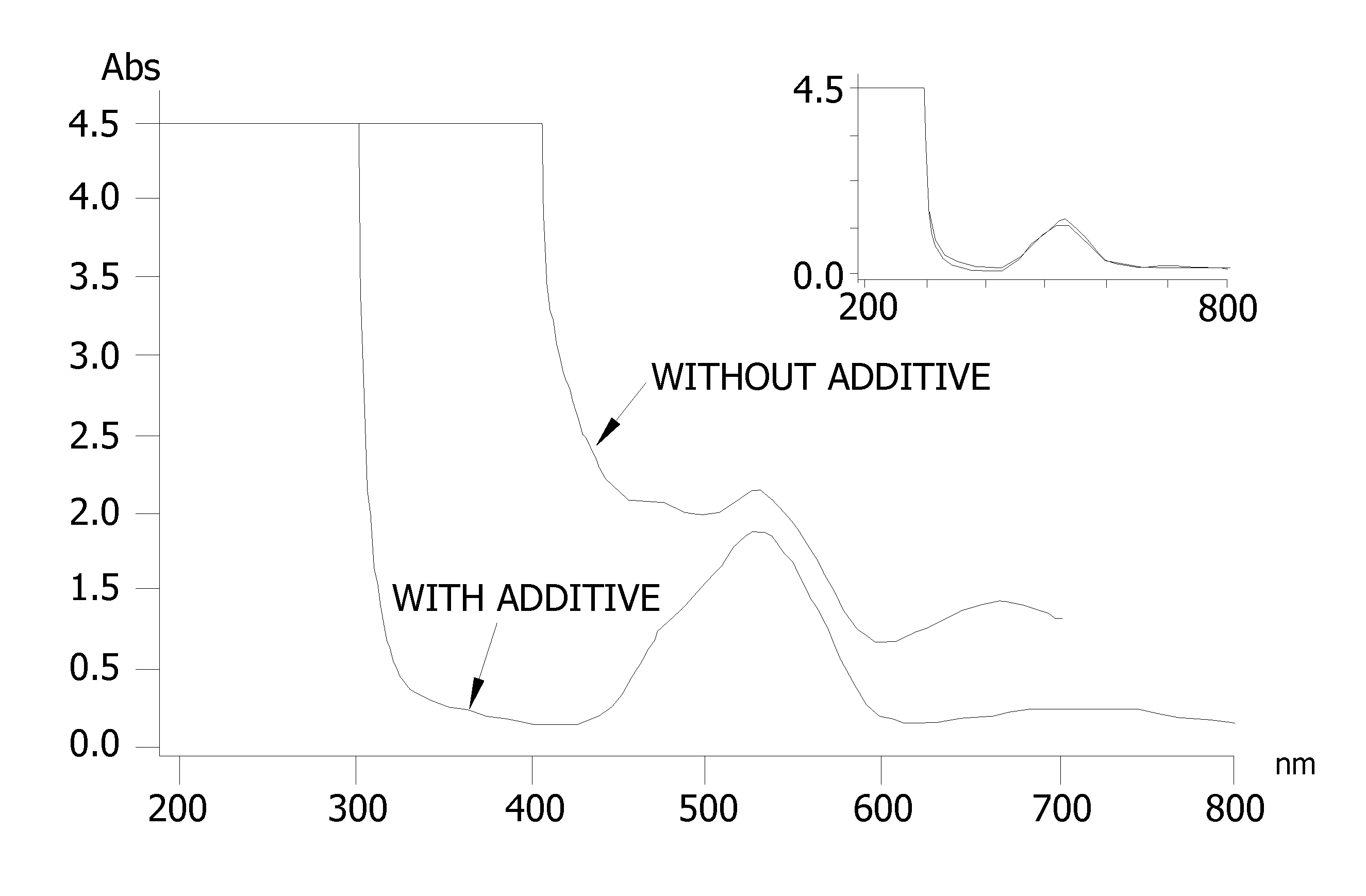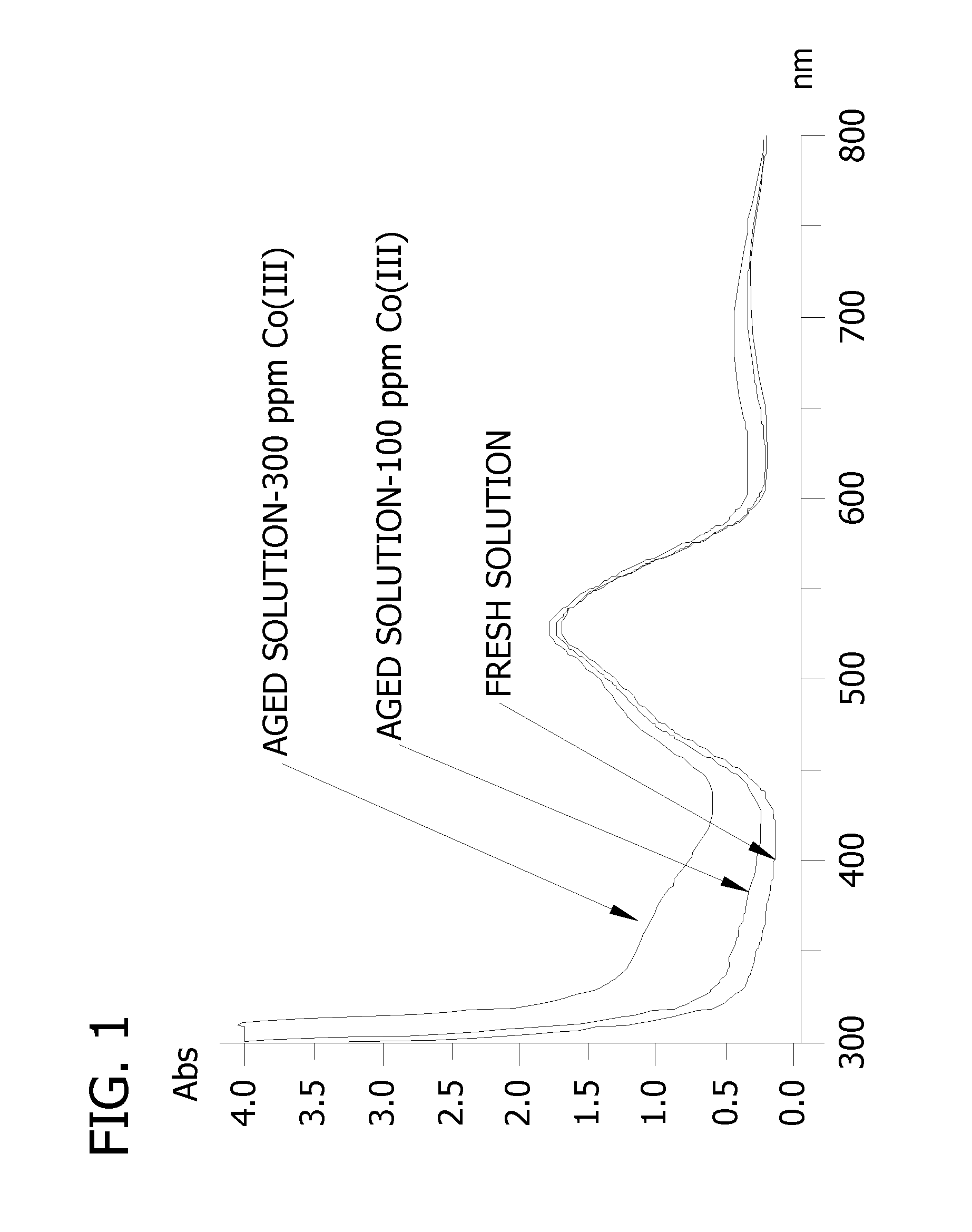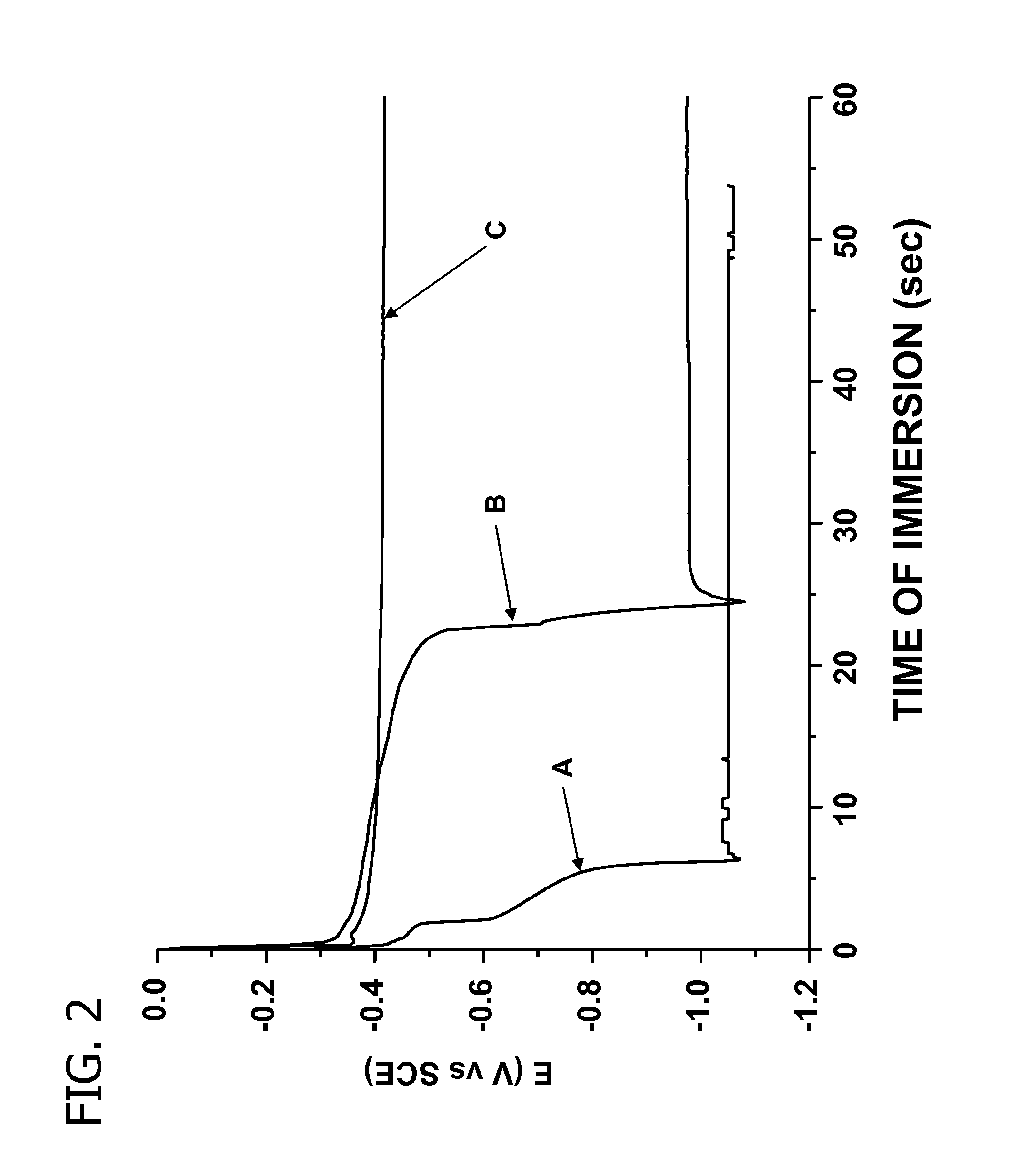Manufacture of electroless cobalt deposition compositions for microelectronics applications
a technology of electroless cobalt and composition, applied in the direction of liquid/solution decomposition chemical coating, solid/suspension decomposition chemical coating, coating, etc., can solve the problems of oxygen itself negatively affecting the deposit quality and device performance, prolonging shelf life, and improving the performance of solution
- Summary
- Abstract
- Description
- Claims
- Application Information
AI Technical Summary
Benefits of technology
Problems solved by technology
Method used
Image
Examples
example 1
Oxidation of Co(II) to Co(III) in Electroless Deposition Compositions with Solution Aging
[0068]An electroless cobalt deposition composition was prepared, separated into samples, aged, and subjected to UV-Vis spectra analysis. See FIG. 1, which has wavelength (nm) on the x axis and absorbance on the y axis. The lower curve is analysis of a fresh solution; the middle curve is analysis of a solution aged for six months with limited air exposure. The upper curve is analysis of a solution aged for four months with extensive air and light exposure. These results show that absorbance in the range of 300 nm to 480 nm increases after the solutions were exposed to air and UV light for certain periods of time. Depending on exposure time and intensity, increases of the solution absorbance vary at wavelength shorter than 480 nm. The absorbance increase is believed mainly due to the formation of Co(III) species in the solutions. Similar absorbance changes were observed for the solutions spiked wi...
example 2
Determination of Induction Time for Electroless Deposition Compositions Comprising Known Concentrations of Co(III) Ion
[0069]The induction times of fresh and aged electroless cobalt deposition compositions were measured. FIG. 2 is a graph depicting the induction times for the compositions: (A) freshly made solution having less than 0.1% oxidation, (B) aged solution having about 2% oxidation, and (C) aged solution having about 10% oxidation. It can be seen from the graph depicted in FIG. 2 that even a low extent of oxidation to Co(III) ion can lengthen Co deposition induction, and about 10% oxidation can prevent induction altogether for commercially practical purposes.
example 3
Determination of Deposition Height Variance for Electroless Deposition Compositions Comprising Known Concentrations of Co(III) Ion
[0070]Co(III) ions may affect the deposit thickness at different features of a patterned wafer substrate. To examine this phenomenon, two electroless cobalt deposition compositions were prepared having known Co(III) concentrations. Composition 1 is a Pd activated system while composition 2 is a self-initiated system. Samples of each composition, either as freshly prepared or aged for 6 months to allow cobalt oxidation to occur, were used to deposit cobalt alloy over dense and isolated features in a patterned wafer substrate. The deposit thicknesses over isolated and dense features from fresh and aged electroless cobalt deposition compositions are shown in the following Table I.
[0071]
TABLE IThickness of Co DepositsComposition 1Composition 2Deposit thickness (Å)freshagedfreshagedDense features120 ± 10None105 ± 1685 ± 5Isolated features113 ± 16none100 ± 1466...
PUM
| Property | Measurement | Unit |
|---|---|---|
| concentration | aaaaa | aaaaa |
| temperature | aaaaa | aaaaa |
| concentration | aaaaa | aaaaa |
Abstract
Description
Claims
Application Information
 Login to View More
Login to View More - R&D
- Intellectual Property
- Life Sciences
- Materials
- Tech Scout
- Unparalleled Data Quality
- Higher Quality Content
- 60% Fewer Hallucinations
Browse by: Latest US Patents, China's latest patents, Technical Efficacy Thesaurus, Application Domain, Technology Topic, Popular Technical Reports.
© 2025 PatSnap. All rights reserved.Legal|Privacy policy|Modern Slavery Act Transparency Statement|Sitemap|About US| Contact US: help@patsnap.com



